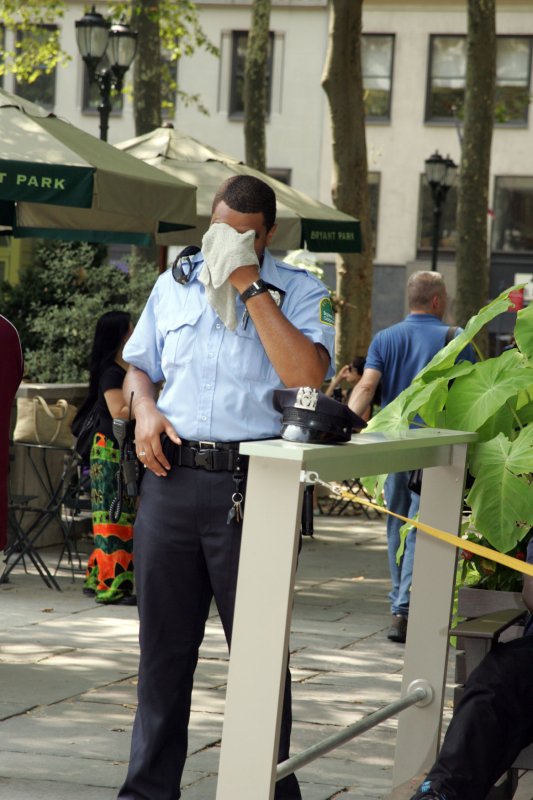1 of 3 | A security officer tries to cool off in the heat in Bryant Park in New York on July 21, 2011. UPI /Laura Cavanaugh |
License Photo
MELROSE PARK, Ill., July 25 (UPI) -- First the Midwest had a string of 100-plus-degree days, then a record 7 inches of rain and now the highest mold count recorded this year, a researcher says.
Dr. Joseph Leija, the allergist who performs the Gottlieb Allergy Count, the official allergy count for the Midwest for the National Allergy Bureau, says Monday's mold count for the Midwest was 30,000 -- just 10,000 short of the threshold for an alert warning -- and that's for the air outdoors.
"This is the highest mold count I have seen this year," Leija, the allergist at Gottlieb Memorial Hospital, part of Loyola University Health System, says in a statement. "Many Midwesterners experienced flooding in their homes which can easily cause indoor mold counts to be much higher -- even to dangerous breathing conditions."
Many homes are pure poison for those with breathing conditions, Leija says.
"All soaked drywall must be cut out and removed as well as carpets, tile, cardboard boxes and the like to prevent mold," Leija says.
Water is both the perpetrator for mold and the recommended cure.
"Plain water should be used to wash off floors, walls and soaked items, and then everything must be dried thoroughly," Leija recommends.
Allergy sufferers should lightly rinse their nostrils with a water-salt solution to rinse off trapped particles and spores, Leija advises.
Symptoms of respiratory irritation from mold include nasal congestion, difficulty breathing, headaches and post-nasal drip and people with allergies must stay in air conditioning and use a dehumidifier, Leija says.















